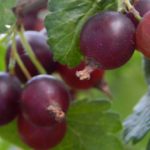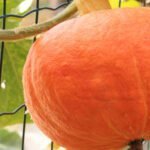Are you looking to learn how to use water storage units to water your vegetable gardens? Water conservation is essential for sustainable gardening practices, and using water storage units can help ensure that your vegetable garden stays hydrated while reducing your environmental impact. In this article, we will explore the importance of water storage for vegetable gardens and provide practical tips on how to efficiently use water storage units for garden irrigation.
Water storage units such as tanks, barrels, and containers play a crucial role in maintaining the moisture levels of vegetable gardens, especially during dry seasons or in areas with limited access to water. By understanding the different types of water storage units available, you can choose the best option for your specific gardening needs and maximize the benefits for your plants.
Proper installation and placement of water storage units in vegetable gardens are key factors in effectively utilizing stored water for irrigation. Whether you are collecting rainwater or storing municipal water, knowing how to set up your water storage unit will ensure that it functions optimally to support the hydration needs of your vegetable garden. Stay tuned as we delve deeper into the various aspects of using water storage units for sustainable gardening practices.
Types of Water Storage Units
Water storage is essential for maintaining a healthy and thriving vegetable garden. There are various types of water storage units that can be used to ensure a steady supply of water for your plants. Here are some options for water storage units that you can consider for your vegetable garden:
- Tanks: Water storage tanks are large containers that can hold a significant amount of water. These tanks are often used for larger gardens or agricultural purposes. They come in different materials such as plastic, fiberglass, or concrete and can be installed above ground or below ground.
- Barrels: Water storage barrels are smaller containers that are ideal for smaller vegetable gardens or urban spaces. They are often made from recycled materials such as food-grade plastic and come in various sizes to suit your needs.
- Containers: In addition to tanks and barrels, there are also other types of containers that can be repurposed for water storage. For example, large plastic drums or even old bathtubs can be used as makeshift water storage units for watering vegetable gardens.
When choosing a water storage unit for your vegetable garden, consider factors such as the size of your garden, the climate in your area, and your budget. Each type of water storage unit has its own advantages and limitations, so it’s important to select the one that best fits your specific gardening needs.
Proper installation and placement of the water storage unit is crucial to ensure efficient use and accessibility for watering your vegetable garden. Ensure that the unit is positioned in an area where it can easily collect rainwater or receive runoff from gutters while still being easily accessible for irrigation purposes. Additionally, consider using elevated platforms or stands to create gravity-fed systems that make it easier to use the stored water.
By understanding the different types of water storage units available and how they can be used effectively in vegetable gardens, you can make informed decisions about which option is best suited for your gardening needs. Whether you choose tanks, barrels, or repurposed containers, incorporating a water storage unit into your vegetable garden can help ensure a sustainable and reliable source of irrigation throughout the growing season.
Proper Installation and Placement of Water Storage Units in Vegetable Gardens
Choosing the Right Location
When installing a water storage unit in your vegetable garden, it’s crucial to choose the right location. The ideal spot for your water storage unit is one that is close to the plants you need to water, while also being easily accessible for maintenance and filling. Additionally, ensure the ground is level and stable to prevent the unit from shifting or tipping over.
Installing the Unit
Whether you are using a tank, barrel, or container, proper installation is key to maximizing its efficiency. Make sure the unit is set up on a stable foundation and securely connected to any irrigation systems you plan to use. For larger units like tanks, it may be necessary to hire a professional for installation to ensure it is done correctly.
Protecting Against Contamination
To prevent contamination of stored water, it’s important to install proper covers and filters on your water storage units. This will help keep out debris, insects, and other contaminants that could affect the quality of the water used for watering your vegetable garden.
By following these guidelines for proper installation and placement of water storage units in your vegetable garden, you can ensure efficient use of collected rainwater or stored water from other sources. With careful consideration of location and installation methods, you can make the most of this sustainable gardening practice while promoting healthy growth in your vegetable garden.
Collecting and Storing Rainwater for Vegetable Garden Irrigation
Rainwater is an abundant and free resource that can be used to irrigate vegetable gardens, reducing the reliance on municipal water sources and lowering utility costs. Collecting and storing rainwater is an essential part of sustainable gardening practices, and it can be easily achieved with the use of water storage units such as tanks, barrels, and containers.
One way to collect rainwater for vegetable garden irrigation is by installing a gutter system on the roof of your home or garden shed. The gutters should direct the flow of rainwater into a downspout which leads to a water storage unit. This can be a large tank for extensive storage or smaller barrels and containers for more limited spaces.
Proper maintenance of these water storage units is crucial in ensuring the quality of collected rainwater. Regular cleaning to remove debris and sediment buildup will prevent contamination and blockages in the irrigation system. Additionally, using a filter to screen out debris from entering the storage unit can further improve the quality of collected rainwater for use in watering vegetable gardens.
- Consider installing a gutter system to collect rainwater
- Direct the flow of rainwater into a downspout leading to a water storage unit
- Regularly clean and maintain water storage units to ensure water quality
Using Drip Irrigation Systems With Water Storage Units
Drip irrigation systems are an efficient way to water vegetable gardens, delivering small amounts of water directly to the roots of plants. This method helps to conserve water and minimize evaporation, making it a perfect complement to water storage units. By integrating drip irrigation with your water storage system, you can ensure that your vegetable garden receives the right amount of water without waste.
Benefits of Using Drip Irrigation With Water Storage Units
When used in conjunction with a water storage unit, drip irrigation systems offer several advantages for vegetable gardens. Firstly, they provide precise control over the amount of water delivered to each plant, promoting healthier growth and reducing the risk of overwatering. Secondly, using drip irrigation can help minimize weed growth by targeting only the areas where plants are growing, ultimately saving you time and effort in garden maintenance.
How to Implement Drip Irrigation With Water Storage Units
To effectively use a drip irrigation system with your water storage unit for watering vegetable gardens, you will need to design an appropriate layout and set up the necessary components. Start by placing the mainline tubing from your water storage unit into the garden area, ensuring that it provides access to all plants.
Then, install drip emitters or micro-sprinklers at regular intervals along the tubing to evenly distribute water throughout the garden bed. Adjust the flow rate and timing based on the needs of different plants, taking into account factors such as soil type and weather conditions.
By combining a well-planned drip irrigation system with a reliable water storage unit, you can optimize your vegetable garden’s watering process for maximum efficiency and conservation. With proper maintenance and regular monitoring, this integrated approach can contribute significantly to sustainable gardening practices while ensuring healthy growth for your crops.
Maintaining Water Quality
When using a water storage unit to water vegetable gardens, it is important to prioritize the quality of the water being used. Proper filtration and treatment of stored water can ensure that your plants receive clean and healthy irrigation, leading to better growth and higher yields. In this section, we will discuss the best practices for maintaining water quality in your vegetable garden through filtering and treating stored water.
One way to maintain water quality is by installing a filtration system in your water storage unit. This can help remove any debris, sediment, or contaminants that may be present in the collected rainwater or stored water. There are various types of filters available, including mesh filters, cartridge filters, and screen filters, each with its own level of filtration. It is important to choose a filter that best suits your needs and the quality of water in your area.
In addition to filtration, treating the stored water with non-toxic additives can also help improve its quality. For example, adding hydrogen peroxide or chlorine can disinfect the water by killing harmful microorganisms. However, it is crucial to use these additives in appropriate concentrations to avoid harming your plants.
Testing the pH levels of the treated water is also recommended to ensure it falls within the optimal range for watering vegetables. By taking these steps to filter and treat your stored water, you can maintain its quality and ensure that your vegetable garden thrives.
| Maintaining Water Quality Practices | Description |
|---|---|
| Install a Filtration System | Remove debris, sediment, and contaminants from collected or stored water |
| Treat Water with Non-Toxic Additives | Disinfect the water using appropriate concentrations of hydrogen peroxide or chlorine |
| Test pH Levels | Check if treated water falls within optimal range for watering vegetables |
Maximizing Water Efficiency
In order to maximize water efficiency in vegetable gardens, it is crucial to make the most of available resources and reduce waste. One effective way to achieve this is by using a water storage unit to collect and store rainwater for garden irrigation.
By doing so, gardeners can significantly reduce their reliance on traditional water sources while ensuring that their vegetable plants receive an adequate supply of water. This method not only conserves water but also helps to lower utility costs.
Another important aspect of maximizing water efficiency in vegetable gardens is the use of drip irrigation systems in conjunction with water storage units. Drip irrigation delivers a precise amount of water directly to the root zone of plants, minimizing evaporation and runoff. When combined with a well-maintained water storage unit, this method can result in significant water savings compared to traditional watering methods. Additionally, using a drip irrigation system can promote healthier plant growth by providing consistent moisture levels.
It is also important to consider the maintenance of water quality when utilizing stored water for vegetable garden irrigation. Filtering and treating the stored water can help ensure that it is free from contaminants and safe for use on edible crops. Regular maintenance of the water storage unit, such as cleaning and sanitizing, can further contribute to maintaining high-quality water for the garden. Implementing these practices can lead to healthier vegetables and a more sustainable gardening approach overall.
| Water Efficiency Tip | Description |
|---|---|
| Collect and Store Rainwater | Reduce reliance on traditional water sources and lower utility costs. |
| Use Drip Irrigation Systems | Promote healthier plant growth through consistent moisture levels and minimize evaporation. |
| Maintain Water Quality | Filtering, treating stored water, and regular maintenance ensures safe irrigation for edible crops. |
Troubleshooting Common Issues With Water Storage Units for Vegetable Gardens
Water storage units are an essential tool for maintaining a sustainable and thriving vegetable garden. However, like any system, they can sometimes encounter issues that need troubleshooting. Here are some common problems that may arise when using water storage units for vegetable gardens, along with solutions to address them.
One common issue with water storage units is the buildup of algae or other contaminants in the water. This can happen if the unit is not properly sealed or if sunlight can penetrate the container. To prevent this, make sure that your water storage unit is opaque or kept in a shaded area to minimize sunlight exposure. Additionally, consider installing a filter system to keep the water clean and free of debris.
Another frequent problem is leaks or overflowing in the water storage unit. This can occur due to incorrect installation, damage, or blockages in the outlet pipes. Regularly inspect your water storage unit for any signs of leaks and ensure that all connections and pipes are properly sealed and intact. If you notice any leaks, take immediate action to repair them to prevent water wastage and potential damage to your garden.
Lastly, some gardeners may find that their stored water develops an unpleasant odor over time. This can be caused by bacterial growth or stagnation within the container. To address this issue, consider adding a small amount of hydrogen peroxide to the water to kill off any bacteria and eliminate odors. Alternatively, you can use activated charcoal filters or UV sterilization systems to maintain water quality in your storage unit.
By being aware of these common issues and taking proactive steps to address them, you can ensure that your water storage unit effectively supports your vegetable garden’s irrigation needs without any major setbacks.
Overall, being prepared for potential problems with your water storage unit will help you maximize its effectiveness in maintaining a healthy vegetable garden while promoting sustainable gardening practices through efficient use of resources such as rainwater collection and reuse.
Conclusion
In conclusion, water storage units are an essential component of sustainable gardening practices, particularly for vegetable gardens. By understanding the importance of water storage and the various types of units available, gardeners can effectively collect and store rainwater for irrigation purposes. Proper installation and placement, as well as the use of drip irrigation systems, can further maximize water efficiency while conserving this precious resource.
Furthermore, maintaining water quality through filtering and treating stored water is crucial for ensuring the health and productivity of vegetable gardens. By addressing common issues with water storage units and implementing troubleshooting techniques, gardeners can overcome challenges to ensure a continuous supply of water for their plants.
Overall, utilizing a water storage unit to water vegetable gardens not only promotes sustainability but also allows gardeners to become more self-sufficient in their gardening practices. It reduces reliance on traditional water sources and helps conserve resources while supporting healthier plant growth. By following the tips outlined in this article on how to use a water storage unit to water vegetable gardens, gardeners can contribute to a more sustainable and eco-friendly approach to gardening.
Frequently Asked Questions
What Is the Best Way to Water a Raised Vegetable Garden?
The best way to water a raised vegetable garden is to do it consistently and deeply. This means watering the plants at the base to avoid wetting the foliage, which can lead to disease. Using a drip irrigation system or soaker hose can help achieve this.
Is It Safe to Use Rain Barrel Water to Water Vegetables?
It is generally safe to use rain barrel water to water vegetables, but there are some precautions to take. Make sure the rain barrel is clean and free of contaminants, and avoid using water collected from roofs treated with chemicals or painted surfaces. Also, consider using a filter or treating the water if you have any concerns about its quality.
How Do I Water My Garden From a Rainwater Tank?
To water your garden from a rainwater tank, you can use a watering can, a hose connected directly to the tank’s outlet, or even set up a drip irrigation system using the stored rainwater. Make sure to monitor the water level in your tank and supplement with other sources if needed during dry spells.

If you’re looking to get into vegetable gardening, or are just looking for some tips on how to make your current garden better, then you’ve come to the right place! My name is Ethel and I have been gardening for years. In this blog, I’m going to share with you some of my best tips on how to create a successful vegetable garden.





